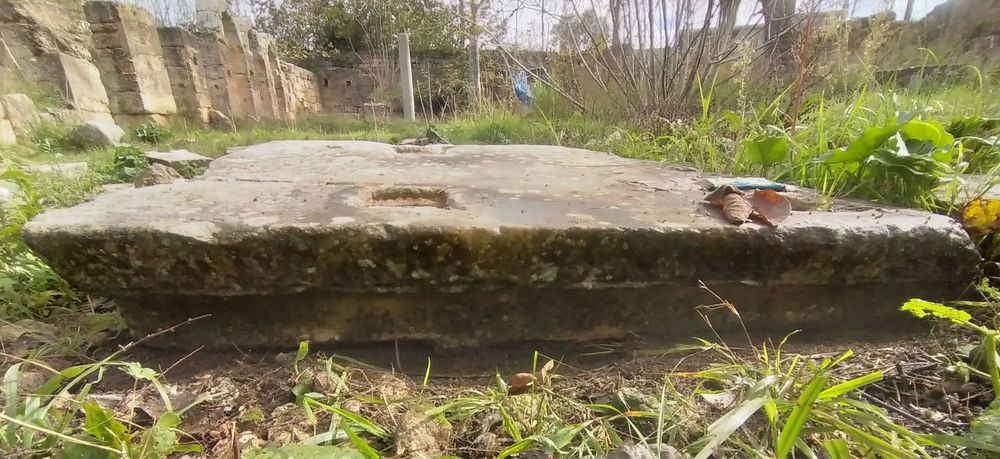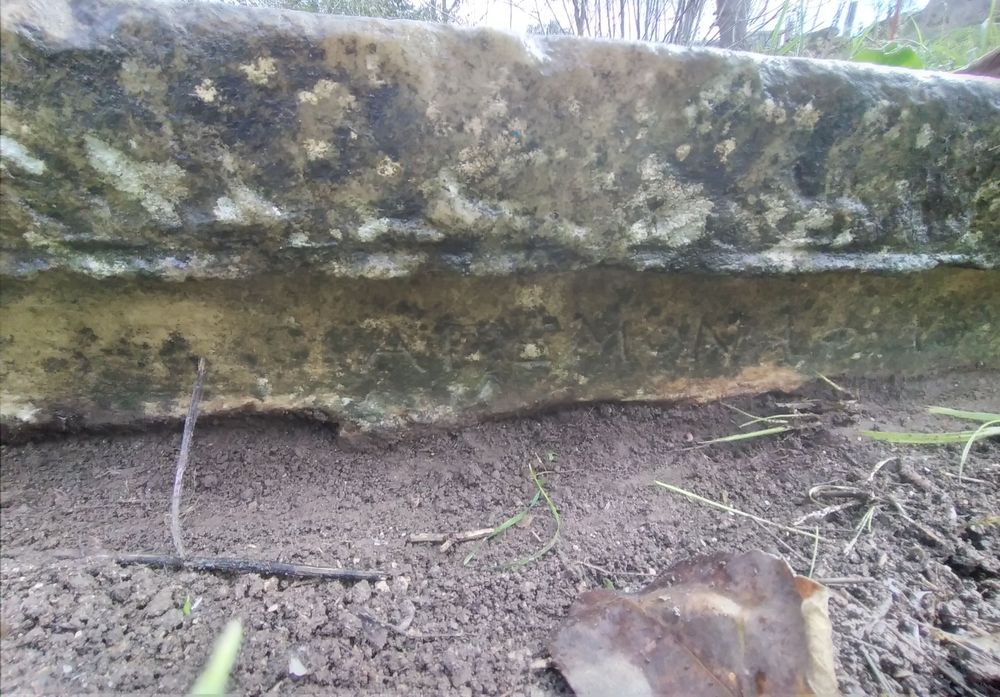EpiDoc XML:
IGCyr0977002
Trismegistos ID:
738494
Source description
Support: White marble base with moulding on top, broken into two adjacent pieces (w: 1.96 × h: 0.19 × d: 1.04).
Layout: Inscribed on front face under the moulding.
Letters: 0.025 to 0.03.
Date: Probably end of fourth or beginning of third century BC
Findspot: Found by G. Oliverio in 1917 at Cyrene ➚: reused in phase 2 of East Church as altar-base, with seven sockets in the upper face for colonnettes sustaining the holy table.
Last recorded location: Seen in 1960 by Pugliese Carratelli at the same place, in the East Church. Briefly seen in 1985 by C. Dobias-Lalou at the same place, photographs and measures impossible; not found again in 2004. Studied and photographed by S. Struffolino in December 2022 at the same place.
Text constituted from: Transcription from stone (CDL).
Bibliography
SECir, 122 (no image); Ward-Perkins – Goodchild – Reynolds 2003, p. 155 (no image); IGCyr 097700 ➚.
Cf. Rosamilia 2023, p. 112, footnote 73.
Text
French translation
Hagémona fille de Philothalès, étant prêtresse a consacré (scil. ce monument).
English translation
Hagemona daughter of Philothales, while being priestess dedicated (scil. this monument).
Italian translation
Hagemona figlia di Philothales, quando era sacerdotessa ha dedicato (scil. questo monumento).
Commentary
The inscription was published without illustration by Pugliese Carratelli at SECir. At Ward-Perkins – Goodchild – Reynolds 2003, p. 155 Reynolds said that she had not seen the inscription. When C. Dobias-Lalou saw the stone in 1985 no photograph could be made and she was not able to find again the inscription on later visits, probably by lack of convenient light. In fact, it was hidden into the earth and S. Struffolino found it again in 2022 after digging a little. His photographs allowed a reconsideration of the lettering, which is earlier than the second century suggested in IGCyr. Therefore, Rosamilia 2023's intuition that Hagemona might have been the daughter of the eponymous priest Philothales known from IGCyr0948002 and the sister of Theuchrestos known from IGCyr0849002 seems now very plausible.
The main priestess at Cyrene is that of Artemis. She held a yearly office like the eponymous priest of Apollo, as attested by mentions of women συνιαριτεύοισα 'being priestess at the same time as' a priest. It is thus highly plausible that Hagemona, here simply said 'priestess' was that of Artemis. Like many stones, this one was re-used in the East Church and plausibly moved from the sanctuary of Apollo.
CC BY-NC-SA 4.0 Deed Attribution-NonCommercial-ShareAlike 4.0 International License.
All citation, reuse or distribution of this work must contain a link back to DOI: https://doi.org/10.60760/unibo/igcyrgvcyr2 and the filename (IGCyr000000 or GVCyr000), as well as the year of consultation.



